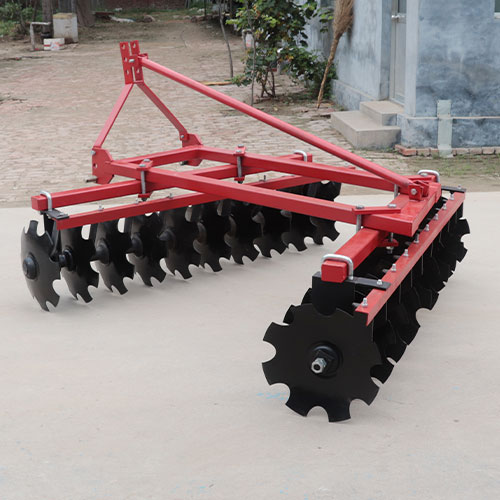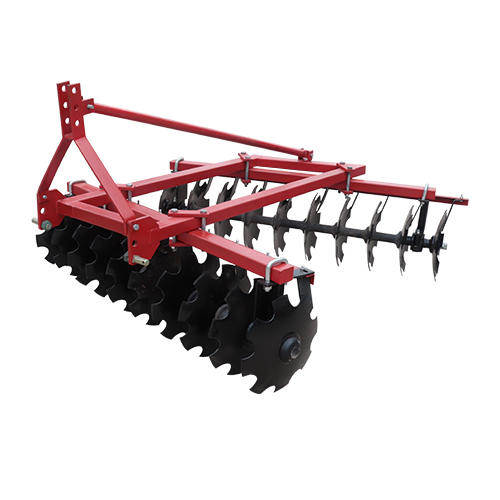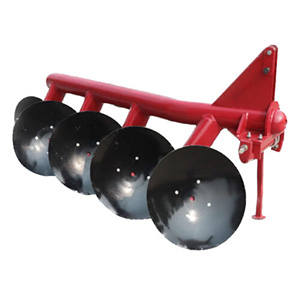Introduction
A disc harrow is a farm tool used to break up soil and smooth topsoil. It consists of several heavy-duty discs mounted on a frame pulled behind a tractor. The disc spins and cuts into the soil, breaking up clods and smoothing the surface. It is a multifunctional tool often used to prepare soil for planting. This blog post will explain what a disc harrow is, how it works, its main components and features.
What is a Disc Harrow?
As mentioned, a disc harrow is a farm implement consisting of several sharp discs mounted on a heavy frame. The discs are angled and overlap each other slightly. They are designed to cut horizontally into the soil as the harrow is pulled across a field.
Some key specifications of disc harrows include:

- Disc diameter: Most range from 12-30 inches in diameter, with larger discs working better in heavier soils.
- Number of discs: Disc harrows typically have between 10-30 discs depending on the size and intended use. Wider harrows have more discs for greater coverage.
- Gauge wheels: Wheels mounted on the frame help control the implement’s depth and keep it level. Larger wheels are better for rougher terrain.
- Hitch: Most modern disc harrows have a category 1 or 2 hitch to connect to a tractor for pulling. Heavier duty models may have a category 3 hitch.
- Optional accessories: Some harrows have rolling baskets, furrowing capabilities, or folding wings for transport. Heavy duty packer rollers can be added to firm the soil.
How Does a Disc Harrow Work?
The basic working principle of a disc harrow is quite simple. As the harrow is pulled across a field by a tractor, the discs cut horizontally into the top 3-8 inches of soil. Their overlapping design helps break up clumps and level the surface.
Table: Common Disc Harrow Components and Their Functions
This table outlines the main components of a disc harrow and their respective functions:
| Component | Function |
|---|---|
| Disc Blades | Slice through soil and crop residues |
| Gangs | Hold multiple disc blades together |
| Frame | Provides structural support |
| Hitch | Connects the harrow to the towing vehicle |
| Bearings | Facilitate smooth rotation of discs |
The harrow does not invert or overturn the soil profile like a plow. Instead, it performs a lighter cultivation focused on just the top few inches. As the implement moves forward, each disc does the following:
- Cuts into the soil surface at an angle, breaking up any clods or residue
- Scrapes soil from the lower layers and deposits it in front of the disc
- Levels the surface by moving soil backward and filling in low spots
With multiple passes in different directions, the disc harrow is able to fully cultivate, break up clumps, level and prepare the seedbed. Heavier models can also aerate compacted subsoil layers.
How to Operate

Proper operation is key to getting the best performance from a disc harrow. Here are some tips:
- Adjust the depth – Use the gauge wheels to control cutting depth. Deeper for heavier work, shallower for lighter cultivation.
- Consider soil conditions – Wet, sticky soil may require fewer/lighter passes. Sandy soil needs deeper work to break up hardpan.
- Set the angle – Discs can be adjusted forward or backward for different soil textures and conditions. Forward is best for lighter work.
- Make overlapping passes – For complete coverage, make successive passes with about 1/3 overlap between discs from the previous pass.
- Consider speed – 3-6 mph is typical, depending on soil type and condition. Slower in wet soil, faster in dry/loose soil.
- Add weight for heavier work – Ballast weights on the harrow or tractor help keep the implement engaged in the soil for more aggressive cultivation.
- Make final passes with discs nearly flat – This provides the final smoothing and leveling before planting.
Proper adjustment and operation are needed to get the full benefits of soil preparation from a disc harrow. Following the above guidelines will help ensure best results.
Conclusion
In conclusion, the disc harrow is a versatile and effective tool for basic soil tillage and seedbed preparation. By breaking up soil clumps, leveling the surface and incorporating residue, it prepares the soil structure and fertility for optimal plant growth. Regular use of a disc harrow as part of a crop rotation program helps maintain long-term soil health and productivity. With proper adjustment, operation and maintenance, it provides growers with a reliable and economical way to manage their most valuable resource – quality topsoil. Following conservation tillage principles, they are an important part of sustainable agricultural systems around the world.
FAQs
How often should a disc harrow be used?
Frequency of use depends on soil conditions and crop needs. As a general rule, disc harrows are well-suited for:
- Fall soil preparation before winter crops like wheat
- Early spring cultivation before warm weather crops
- Overseeding or incorporating fertilizers/manures in the spring
- Light cultivation 1-2 times during the growing season as needed
How deep should a disc harrow work?
The ideal working depth is typically 3-6 inches. Clay or compacted soils may require deeper work (6-8 inches), while lighter sandy soils need only 3-4 inches of cultivation. Depth can be adjusted using the gauge wheels.
Should rocks and debris be removed before using a disc harrow?
It’s always best to clear any large rocks or debris from the field that could damage the discs or hitch components. Stones larger than 6 inches should be removed.
How long do disc harrow discs typically last?
Under normal use, disc harrow discs can last 3-5 years on average before needing replacement, depending on soil conditions. Discs will wear down more quickly in rocky, acidic or heavy clay soils.


